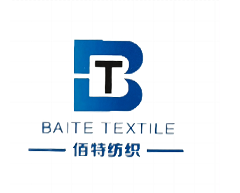Video
1 / 3
knit poly rayon spandex fabric
$8.00
≥500 Kilogram
| Brand Name : | BT |
|---|---|
| Material : | Polyester / Cotton |

Product description
|
Item No. |
BTK012# |
|
Name |
polyester rayon spandex knit fabric |
|
Composition |
TC spandex |
|
N.Wet |
270G/M |
|
Width |
1.6M |
|
Delivery Time |
About 30 days |
|
Packing |
Roll in strong tube, then put into plastic bag, last put into a woven bag. |
|
Payment |
30% deposit, 70% balance aganist the B/L copy. |
|
Sample |
Sample is free with freight collect, pls advise your courier account. |
One: What are recycled fabrics?
Recycled fabrics refer to fabrics made from recycled raw materials, such as cotton, hemp, bamboo fiber, etc.
,Compared to conventional fabrics, renewable fabrics are more environmentally friendly ,
because their raw materials come from recycled resources and no harmful pollutants are produced during production.
Two: Choice of Renewable Raw Materials
1. Cotton: Cotton is the most common renewable raw material, mainly derived from cultivated cotton.
Cotton fiber is soft in texture and has good breathability, so fabrics made from it feel comfortable and breathable.
Cotton fabrics are easy to dye during production, with bright colors.
2. Hemp: Hemp is a natural plant fiber that is both durable and breathable, making it a suitable fabric for summer wear.
When making hemp fabrics, it is important to note that hemp fibers are hard,
and need to be subjected to heat pressing before dyeing to make them easier to dye.
3. Bamboo fiber: Bamboo is a fast-growing plant, and bamboo fiber can be used to make soft,
breathable fabrics with antibacterial and UV protection functions.
When making bamboo fabrics, it is important to note that bamboo fiber has a small fiber diameter,
making it difficult to dye the fabric.
Three: Fabric manufacturing process
1. Collection and processing of renewable raw materials:
first of all, renewable raw materials need to be collected and processed,
such as stripping cotton seeds, hemp fiber skin, or cutting bamboo into thin strips.
2. Spinning: the collected raw materials are processed into thin horsetail,
and then the thin horsetail is pulled into long fibers through adhesion, stretching,
stranding and other processes, and then spun into yarn.
3. Weaving: the yarn is put into the loom, and the fully automated weaving process is made into renewable fabrics.
4. Dyeing and finishing: the fabric is dyed or other finishing processes to make it more functional and beautiful.
Four: Advantages of renewable fabrics
1. Environmental protection: the production process of renewable fabrics uses a small amount of chemical substances,
which can reduce the pollution to the environment.
2. Comfort: because the renewable fabric itself has good air permeability and pure cotton feeling,
it can bring more comfortable wearing experience.
3. Health: because the renewable fabric has natural antibacterial function,
it can reduce bacterial breeding and ensure the health of wearing.
In a word, the production process of renewable fabrics is not complicated.
By adopting suitable raw materials and production processes,
it can not only produce excellent fabrics, but also make contributions to environmental protection.
Video
Send your inquiry to this supplier


















